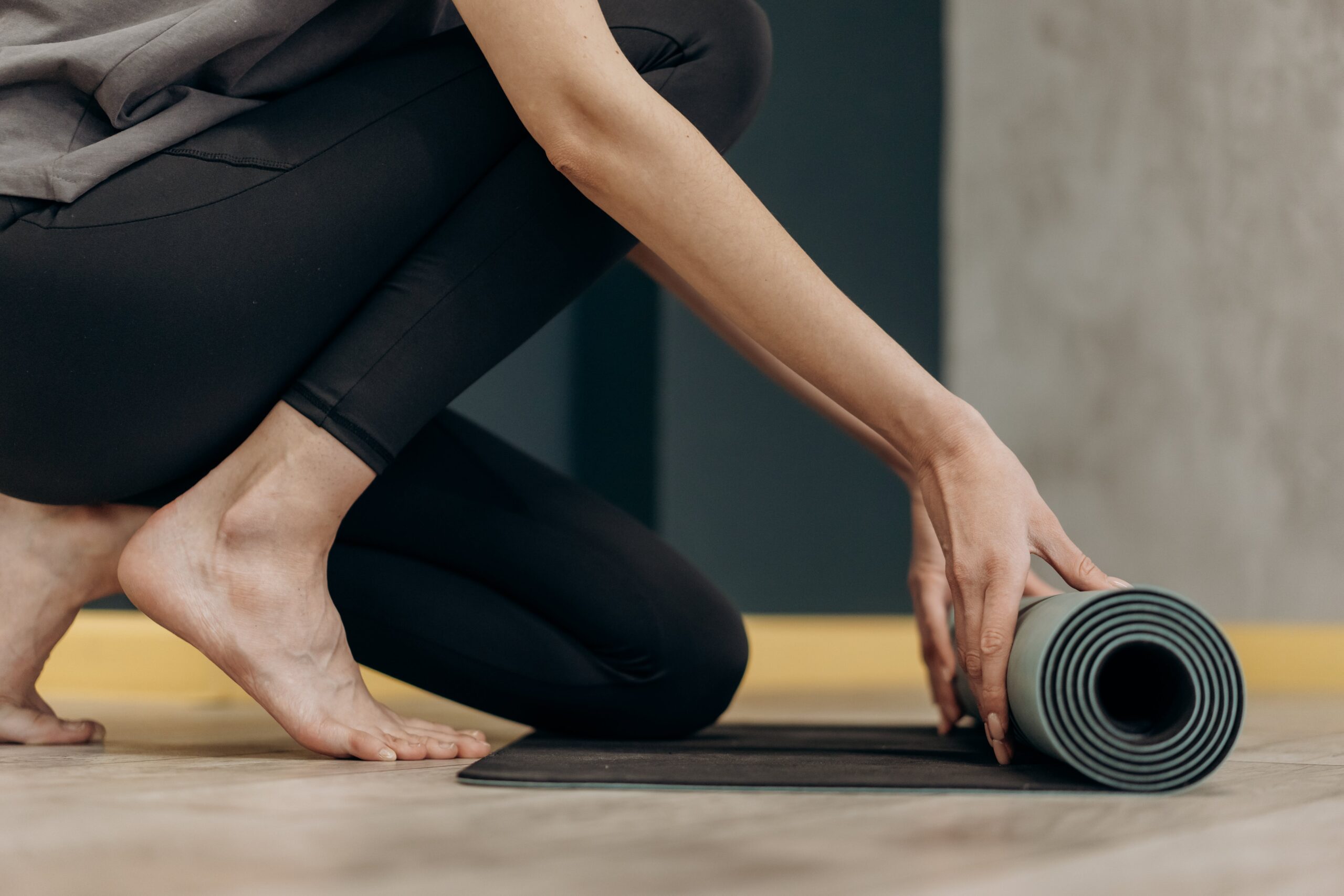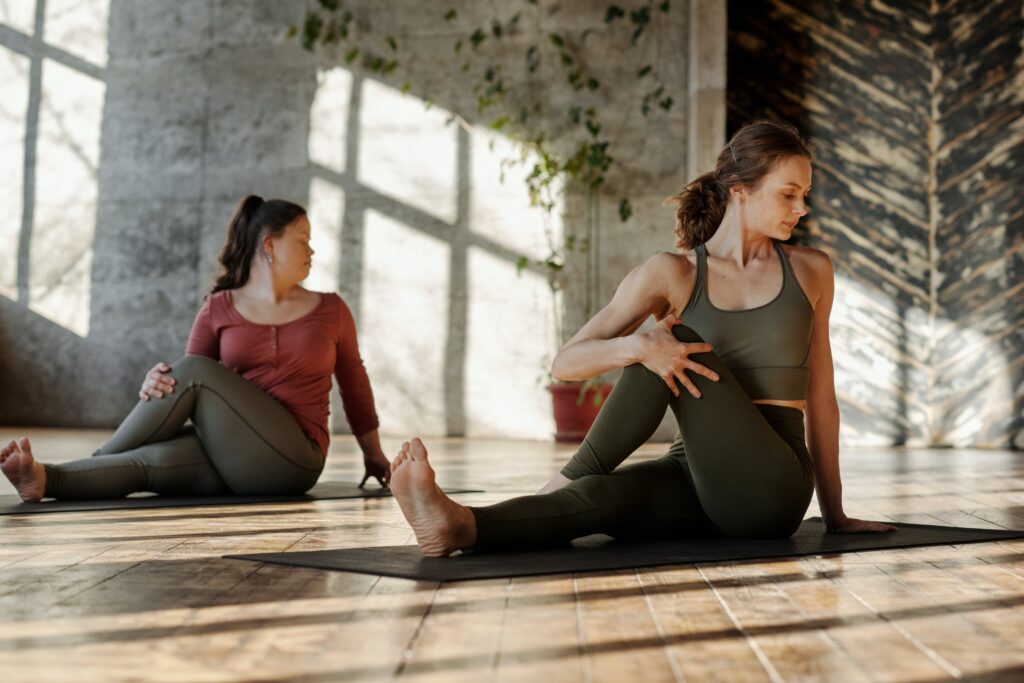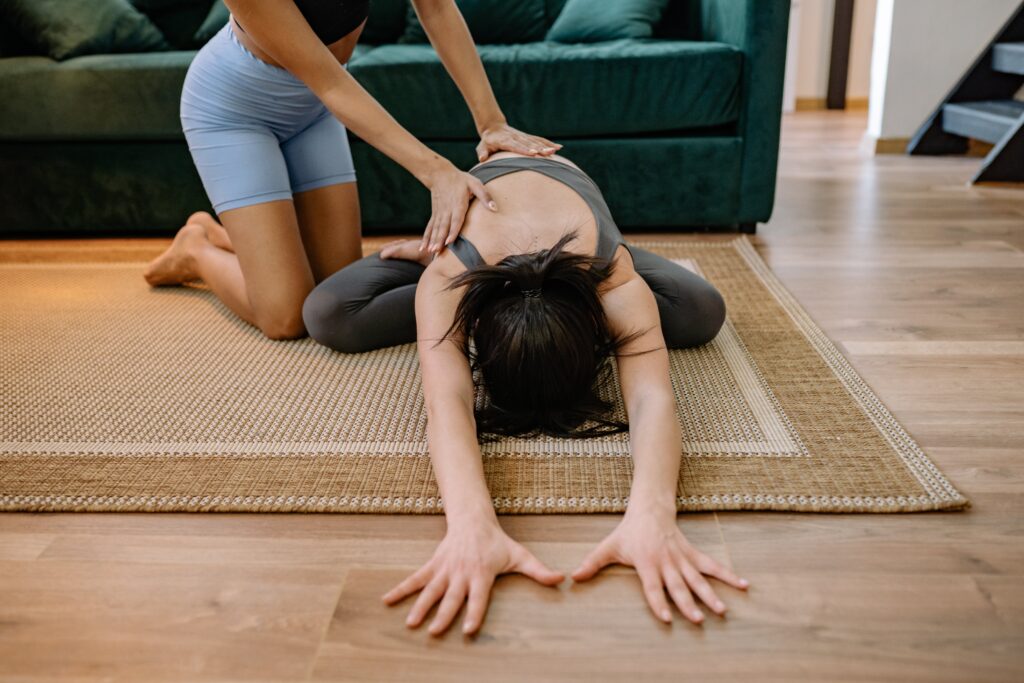
Integrate Yoga into Your Daily Life
Unroll Your Mat, Unfurl Your Life: Living Yoga Beyond the Mat
I’ve been thinking a lot about yoga; about what yoga is, about how I teach yoga, how yoga ought to be taught, and how I can best make yoga relevant and helpful for all people whilst maintaining the integrity of the spiritual practice. This blog will explore what it means to live yoga beyond the mat and to integrate yoga into your daily life.
There’s a reason that yoga isn’t considered just a regular exercise. Yes, yoga has a physical aspect to it. You learn beneficial poses that help with flexibility, strength, stability and balance. But not only are these benefits for your body, they can be translated to non-physical benefits, too. Ones that exist off the mat. A commitment to a yoga practice is a commitment to a lifestyle. We get the opportunity to learn skills and practice these skills on the yoga mat then apply them to our everyday lives.
Throughout my life as a student of yoga, I have often wondered what teachers mean when they say to ‘live your yoga off the mat’. As I have gradually begun to deeply understand what this means, my yoga practice has developed greater depths and meaning. I hope this post can help you delve deeper too.
The Yamas and Niyamas: A framework for a Yogic Lifestyle
Yoga, in its truest essence, extends far beyond the confines of a studio, of your mat or even your physical practice. Yoga, at its heart, is a philosophy, a way of being, a roadmap to navigate the complexities of life with grace and equanimity. So, how can we unroll the teachings of yoga and embrace its wisdom even when we’re not on the mat?
The Yoga Sutras (thread), also known as the Yoga Sutras of Patanjali, are a foundational text in yoga philosophy and practice. Compiled by the sage Patanjali, it’s not just a book of poses, but a comprehensive guide to achieving liberation (moksha) through self-discipline and spiritual practices.
Part of these Sutras are The Eight Limbs of Yoga. These form the core practical framework. They present a step-by-step path towards liberation (moksha) through self-discipline and spiritual practices.
These limbs are not meant to be practiced in isolation, but rather build upon each other progressively. Here’s a breakdown of each limb:
Yamas
Ethical guidelines for interacting with yourself, the world and others. By cultivating these qualities, we create a foundation for living ethically and with integrity.
Niyamas
Personal observances for self-discipline and growth. They help us cultivate self-discipline, awareness, and dedication on our yogic journey.
Asana
Physical postures designed to strengthen and purify the body, preparing it for meditation. While often associated with poses practised on a mat, asana can encompass any movement practised with awareness and mindfulness.
Pranayama
Breath control techniques to regulate energy flow and calm the mind. By controlling our breath, we gain more control over our emotions and mental state, creating a stable platform for meditation.
Pratyahara
Withdrawal of the senses from external distractions, turning inward. This involves learning to manage our senses and not be constantly pulled outwards by external stimuli. It cultivates focus and inward awareness.
Dharana
Focused concentration on a single object, such as the breath or a mantra. This develops the ability to concentrate intently and hold focus without getting distracted.
Dhyana
Uninterrupted meditation, where attention effortlessly flows towards the object of concentration. This is a state of deep meditative absorption where awareness expands beyond the limitations of the mind.
Samadhi
Merging with the object of meditation, experiencing oneness and ultimate liberation. This is the culmination of the yogic journey, where the distinction between self and other dissolves, and one experiences pure consciousness.
The Yoga Sutras offer a powerful framework for living with intention. The Yamas, translating as ‘Control’ are ethical guidelines for our interactions with ourselves and with the world around us. The Yamas consist of Ahimsa (non-violence), Sateya (truthfulness), Asteya (non-stealing), Brahmacharya (creativity), and Aparigraha (non-attachment, non-possessiveness).
We can strive to embody these principles not just in our yoga practice, but in our daily conversations, our online interactions, our consumption choices? Every interaction becomes an opportunity to practice Ahimsa, even in the face of disagreement. Every relationship or occurrence, a chance to align with Aparigraha.
The Niyamas turn the lens inward, guiding our personal growth. Saucha (cleanliness), Santosha (contentment), Tapas (discipline) Svadhyaya (self-study), Isvara Pranidhana ( surrendering to a higher power). Devotion to these guidelines can become powerful tools for self-discovery. Does that morning meditation practice translate into mindful eating choices? Does your commitment to Saucha (cleanliness) extend beyond your physical hygiene to encompass the purity of your thoughts, words and actions?
Sthira Sukham Asanam
In the Yoga Sutras of Patanjali, ‘Sthira Sukham Asanam’ is a Sanskrit term that refers to the ideal state of a yoga pose. It is often translated as “steadiness and ease in the pose” or “comfortable and stable posture”.
Sthira (steadiness) refers to the physical stability and strength required to maintain a pose without wobbling or collapsing. It also implies a sense of mental focus and determination.
Sukham (ease) refers to the feeling of comfort and relaxation in the pose. It is important to find a balance between effort and ease in order to avoid strain or injury.
According to Patanjali, asana (physical posture) is the third limb of yoga. It is a preparatory practice for meditation, helping to calm the mind and body and prepare for deeper introspection.
To achieve Sthira Sukham Asanam, it is important to:
- Find a pose that is appropriate for your level of experience and physical ability.
- Pay attention to your alignment and make sure that your body is in a safe and balanced position.
- Engage your muscles to maintain the pose, but avoid over-tensing or straining.
- Breathe deeply and evenly to help relax your body and mind.
- Focus your attention on the present moment and the sensations in your body.
Sthira Sukham Asanam can translate beyond the postures and become our inner state. How well can we stay steady and at ease in life in interactions, in experiences, through the challenges and storms. This delicate balance of effort and ease, of when to push and when to surrender.
Our ability to flow with the changes and ups and downs in life improves. The more we practise, the more we realise that every practice is different. We have different internal and external worlds going on at any given time. But as we begin to attune to the ever changing nature of our yoga practice, our energy, our bodies and our mental states, we can begin to tune to and flow with the ever changing nature of life.
With consistency and patience in this practice, we can begin to notice ourselves feeling a lot calmer and tolerant in situations that might have caused stress or anxiety before.
Yoga expands our overall flexibility, releasing rigidity and resistance to change
You may decide to start a yoga practice because you have tight hamstrings or a stiff back, and with a steady practice, you’ll begin to experience relief and release in these areas.
But also consider this, while you’re working on mastering the splits, imagine what inviting in more flexibility off the mat would look like in your life. If you tend to be rigid in your thinking, for example, practise opening your heart and mind in your daily routines. Keeping an open mind could look like trying new things, stepping out of your comfort zone, exploring new perspectives, and even being okay when things don’t work out the way you originally planned.
Yoga increases your awareness, ability, and desire to pay closer attention/listen to yourself and others
How many of us have a tendency to listen to respond, rather than to understand? In order to comprehend another person’s point of view, you have to take the time to actively listen. Practising yoga, you begin to increase your listening skills. In classes, you pay close attention to the teacher providing instructions so you can move in and out of yoga poses fluidly and safely. This also means paying attention to your own body. As instructions are given, your body has to respond to achieve the intended goal. When you stop listening, there is the risk of missing important cues or even making a mistake that might cause harm.
Try applying this skill off the mat. When you’re in conversation with someone, for example, be present and truly listen to what they have to say. Engage in conversation rather than dominate it. This will improve the health of your relationships, too, because you begin to truly listen and can have open and honest conversations with your friends, family, colleagues, and partners.
You become less judgemental and more compassionate
Another beautiful result of open and honest communication is offering a safe space with no judgement. This will encourage others to be more free and expressive with you when there is no judgement attached to your conversations. Interactions will tend to be more honest and open. You can practise this skill in yoga, too. Although not the most obvious of benefits, like gaining more flexibility or strength, learning to be non-judgmental is a part of the practice. While in class, you are encouraged to become the internal witness; to observe what is happening inside of you – your thoughts, your emotions. And as you become aware of these sensations, you learn to be more accepting rather than judging.
You begin to see things as they are, rather than attaching a judgment to it. If you’re able to do that for yourself, you can even do it off the mat while engaged with others. It allows for outside truths and perspectives to not only be expressed freely, but invited in from others.
You will become much less reactive
When you are able to experience your internal non-judgmental witness, you’ll find that you’re less reactive to situations. In this way we can integrate yoga into our daily life. In yoga, if you fall out of a balancing pose, for example, rather than getting upset, you accept the experience and step back into the pose. As a result, you feel less anxious; your stress response significantly decreases. This, too, can be practised off the mat. The little things that used to upset you will seem unimportant after practising yoga for a while. You’ll be able to move forward without letting certain situations plague your mind causing you more stress. As a result, you’ll feel happier, more content with life’s events, even when there’s mishaps and mistakes; you’ll learn to not react to them too strongly.
You will slow down, and become more connected with the present moment
Many of us lead very busy lives and It can be a rare opportunity that we take the time to truly slow down to take care of ourselves. In yoga, we’re often reminded to take a slower pace. It is the time in which you slow down your body to ease your racing mind. This practice can certainly be taken off the mat. When you find yourself rushing around town, with a mind filled with frazzled thoughts, remember what you learned in your yoga practice. Take a few seconds to stop, take a few deep breaths, acknowledge the present moment, and then proceed with your obligations.
I have a common daily practice to take conscious breath breaks through the day. These moments of re-centering last anywhere from 1-15 min depending on my day. This practice has been especially helpful as a way to reset my energy as I move around throughout the day from one place to the next.
Your patience will increase
We can integrate yoga into our daily life by learning to slow down, yoga helps you to become more patient. In addition to the fast-paced lives we lead, we often want things immediately. We have lost the sense of patience since we are in the era of the internet, cell phones, and drive-throughs. Having a regular yoga practice invites us to not only slow down, but it teaches us to wait; to not anticipate things so quickly. Practising yoga reminds you that it takes time, effort, commitment, and dedication to achieve some goals. This is something that you can certainly use outside the yoga studio walls. If you have some life plans or goals, remember that achieving those goals doesn’t happen overnight; it requires patience and ease of mind in order to take the steps toward your intended goals. As we learn to drop out of the busyness of our thinking minds and to tune in and listen to our bodies, we can better hear its subtle signs, to understand the wisdom there is in rest and when to push out of our comfort zone and when to surrender.
Having a strong mind goes hand-in-hand with slowing down and having patience. It provides a sense of confidence that allows you to pursue your goals even when it may take a significant amount of time.
You will start to increase your focus and concentration
Another amazing benefit of your yoga practice that you can take off the mat is focus and concentration. When you take the time and really devote yourself to your practice, you experience a softening of the mind. When we integrate yoga into our daily life, we’ll feel less tense, less reactive, more calm, and more in-tuned. Our minds can easily wander, especially when there is so much to manage in our lives. Yoga gives you the gift of slowing down to focus and to better concentrate. You’ll see this in your everyday life, too. You’ll be able to focus on your work easier. Distractions will become minimal. You’ll be able to concentrate on what you need to get done. More items will be checked off your to-do list. This ultimately, begins to make you feel lighter and happier as you reap the benefits of a more intentional life.
Weaving Mindfulness into the Fabric of Life
Yoga teaches us to be present in the moment, to observe our thoughts and emotions without judgment. This is true for our asana practice but also true for all life situations. Be truly present in your conversations, savour the flavours of your meal, walk mindfully, listen deeply. Notice the details of your surroundings, the symphony of sounds, the textures beneath your feet. This conscious awareness becomes a potent antidote to the autopilot mode we often find ourselves in.
Finding Serenity in the Everyday
Life throws curveballs. Yoga equips us with the tools to respond with equanimity, accepting what we cannot control and focusing on what we can. The more we can master our breath and our reaction in tricky shapes on the mat, the more we can do the same in challenging times in life. Does that deep breath in Savasana translate into calmness during a traffic jam? Does your Aparigraha (non-attachment) practice help you let go of the need to control every outcome? Cultivating inner peace isn’t about escaping challenges; it’s about facing them with resilience and a centred mind.
Living yoga isn’t about achieving picture-perfect poses or chanting Sanskrit verses flawlessly. It’s about carrying the essence of the practice into every aspect of your being and integrating it into our daily life. Be kind, be honest, be present. Let yoga be the guiding light that illuminates your interactions, your choices, your very way of being in the world. Remember, you are the mat, and every moment is an opportunity to practice.
So, unroll your mat, yes, but also unfurl the wisdom of yoga onto the canvas of your life. You might be surprised at the transformation that unfolds, both on and off the mat.
If you’d like more information on yoga philosophy please contact me or book here to practise with me in Marlow, Twickenham and online.
With love
Anney xx




